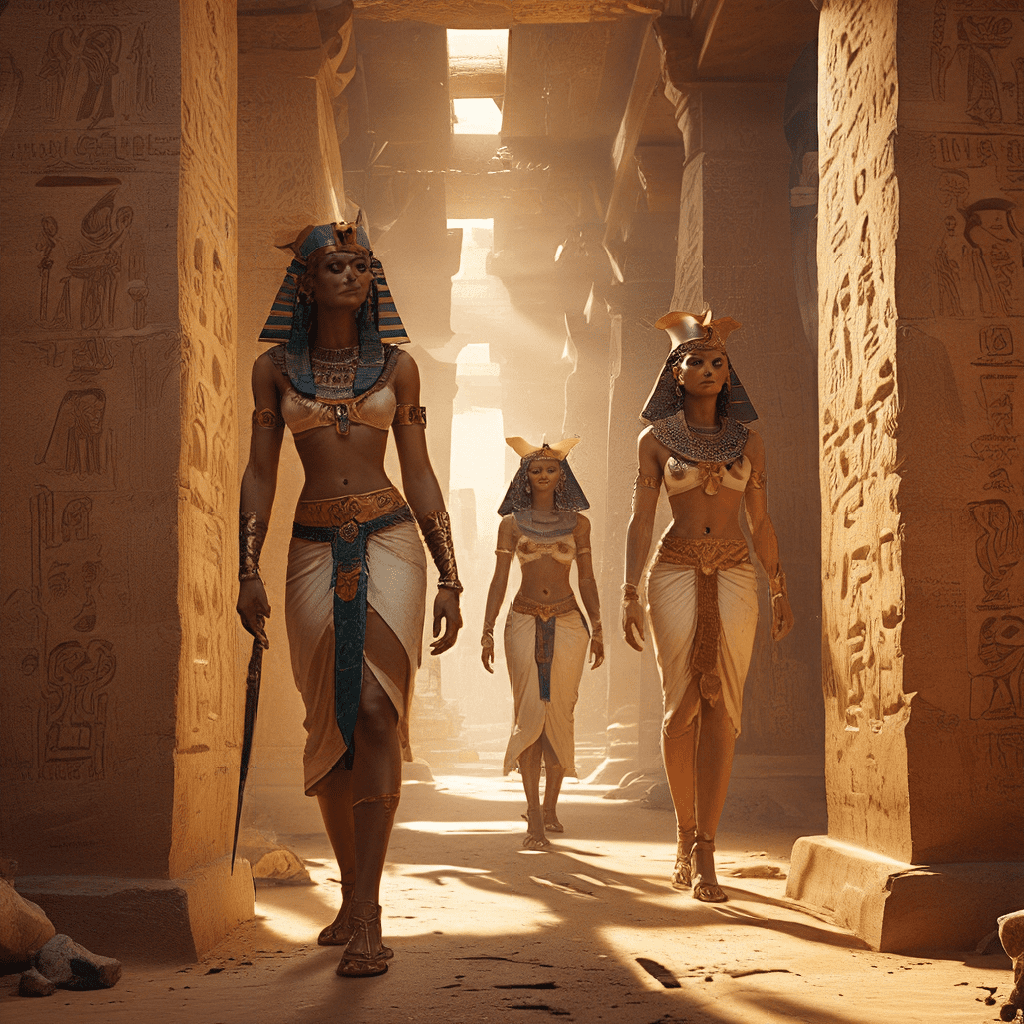The Gods and Goddesses of the Pyramids: Unveiling the Divine Connections to Ancient Egyptian Tombs
The pyramids of ancient Egypt stand as testaments to a civilization obsessed with the afterlife. These towering structures are not merely tombs, but intricate expressions of a sophisticated belief system that intertwined the earthly realm with the divine. To truly comprehend the pyramids, we must delve into the realm of ancient Egyptian mythology and explore the profound connections between these majestic structures and the pantheon of gods and goddesses.
II. The Pyramid as a Symbol of the Divine
The pyramid, with its soaring apex, was a powerful symbol in ancient Egyptian cosmology. More than just a tomb, it represented a bridge between the earthly realm and the heavens. The pyramid’s shape echoed the Benben, a primordial mound that emerged from the primeval waters, representing the first landmass and the foundation of creation. This connection placed the pyramid at the heart of the Egyptian creation myth, associating it with the divine power that brought forth the universe.
In the minds of the ancient Egyptians, the pharaoh’s journey to the afterlife was a sacred ascent. The pyramid, with its upward-pointing form, mirrored this journey. The pharaoh, upon death, was believed to ascend to the heavens, ultimately joining the sun god Ra in his celestial barque. The pyramid, therefore, served as a conduit for the pharaoh’s transformation, guiding him through the trials of the afterlife and towards eternal life.
III. The Sun God Ra and the Pyramid’s Orientation
Ra, the sun god, held a central position in ancient Egyptian mythology. He was the creator, sustainer, and ruler of the cosmos, responsible for the daily cycle of life and death. His journey across the sky, from dawn to dusk, symbolized the passage of time and the cyclical nature of existence. Ra’s influence is evident in the pyramids’ careful orientation.
Pyramids, particularly those built during the Old Kingdom, were meticulously aligned with the cardinal points, especially the east. This alignment was not accidental; it reflected a deliberate connection to Ra’s journey. The eastern face of the pyramid, where the sun rose each morning, symbolized the pharaoh’s rebirth and resurrection, mirroring Ra’s daily journey across the sky. As the sun rose, its rays illuminated the pyramid’s eastern face, signifying the pharaoh’s emergence from the darkness of death into the light of the afterlife.
IV. Osiris, God of the Underworld, and the Pyramid’s Inner Chambers
Osiris, the god of the underworld, played a crucial role in the ancient Egyptian afterlife. He was responsible for judging the dead and granting them entry into the realm of eternal life. His death and resurrection served as a model for the cyclical nature of life and death, and his association with the underworld made him a significant figure in the construction and symbolism of the pyramids.
The pyramid’s intricate inner chambers, with their winding passageways, burial chambers, and secret rooms, reflected the structure of the underworld as envisioned by the ancient Egyptians. These chambers, designed to house the pharaoh’s mortal remains, were more than just burial spaces; they served as symbolic representations of Osiris’s realm. The pharaoh, upon entering the pyramid, embarked on a journey through the underworld, guided by Osiris’s judgment and ultimately seeking rebirth and eternal life.
V. Isis, the Divine Mother, and the Protection of the Pharaoh
Isis, the goddess of magic, motherhood, and protection, held a profound position in ancient Egyptian mythology. She was known for her powerful healing abilities and her devotion to her son Horus, the god of kingship. The ancient Egyptians believed that Isis’s presence ensured the health and well-being of the pharaoh, both in life and in death.
Isis’s protective role is reflected in the presence of her symbols within the pyramids. Perhaps the most notable is the “eye of Horus,” often found on the pyramid’s walls or within the burial chamber. This symbol represented Horus’s divine power and Isis’s watchful eye, safeguarding the pharaoh from harm and ensuring his safe passage to the afterlife.
VI. Anubis, the Jackal God, and the Mummification Process
Anubis, the jackal god, is closely associated with death and the mummification process. He guided the deceased through the underworld, weighing their hearts against the feather of truth and ensuring a fair judgment. The jackal, with its scavenging nature, was seen as a protector of the dead, guiding them through the perilous journey to the afterlife.
Anubis’s role in the mummification process was considered essential. The preservation of the pharaoh’s body was crucial for his resurrection in the afterlife, and Anubis’s presence ensured that the rituals were performed correctly. The inclusion of Anubis’s symbols, such as the jackal’s head or the scales used in the Weighing of the Heart ceremony, within the pyramid’s chambers reinforces the importance of this process in the pharaoh’s journey to eternal life.
The pyramids of ancient Egypt, with their intricate architecture and symbolic decorations, stand as testaments to a belief system that intertwined the earthly realm with the divine. By understanding the gods and goddesses associated with these majestic structures, we gain a deeper appreciation for the ancient Egyptians’ profound reverence for the afterlife and their unwavering faith in eternal life.




